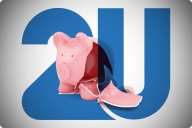You have /5 articles left.
Sign up for a free account or log in.
As public colleges in most states have seen their per-student funding drop in recent years, many of them have responded in now-familiar ways: increasing the number of out-of-state students and sharply ratcheting up tuition. The latter strategy has drawn the ire of policy makers, leading many of the state universities that have announced tuition prices for the 2014 fiscal year to limit the size of increases, if not to freeze the rates entirely.
All of which makes Friday’s announcement of a “new operating model” by the College of William & Mary noteworthy. The Virginia institution is among the nation’s oldest and most respected public liberal arts colleges, and it competes for students with many selective private institutions that both charge significantly more and offer more financial aid.
So perhaps it’s not surprising that the new business model William & Mary is embracing looks a lot more like the “high tuition, high aid” approach that most selective private institutions employ, and would nominally diminish, rather than increase, the institution’s dependence on out-of-state students.
While W&M officials are quick to state that they are “not going private, not walking away” from their state mission, as Vice President for Finance Samuel Jones put it in an interview Friday, the new approach entails significant increases in tuition prices, big boosts in financial aid for students from lower- and middle-income backgrounds, and greater investment in faculty pay and other academic initiatives – all designed to bolster what administrators call the college’s “public Ivy” future.
The William & Mary Promise, as the plan is named, is very much designed to respond both to the college’s financial situation and to the concerns of state policy makers and families. Virginia’s governor, Bob McDonnell, appointed a panel in 2010 to study higher education in the state, and among the issues it focused on was a “middle class squeeze” in college affordability. (In his 2012 budget message, McDonnell also questioned the approach of raising tuition on in-state residents to subsidize financial aid for low-income students.)
And early this month, for the second straight year, McDonnell sent college presidents a letter urging them to keep tuition prices “in check” – which he defined as in step with the cost of inflation – to keep college affordable for the state’s families.
The new pricing plan would seem to align with some, but not all, of McDonnell’s goals. While tuition for returning Virginia residents will grow only by the increase in the consumer price index between now and 2016, it will rise sharply over each of the next three years for new in-state students, with double-digit bumps from this year's $8,677 to $10,428 in 2014, $12,428 in 2015, and $13,978 in 2016.
But those increases will be mitigated by a “guarantee” that will freeze tuition for each entering class at the price it pays in the first year, W&M officials said. “This really aims to emphasize predictability for families,” said Jones, the finance vice president.
(Families of out-of-state students will pay 3 percent more in 2014 than in 2013, and the plan makes no commitment about limiting tuition increases for such students in future years. Tuition for most graduate programs is also expected to rise fairly sharply, by 4 to 5 percent a year.)
Even with the significant increases in tuition over the first three years, most Virginia residents will see the net amount they pay to attend William & Mary stay level or decline, and the average debt levels for in-state undergraduates who receive financial aid will drop, college officials said.
That’s because the college will cut the loan amounts for families who earn between $40,000 and $60,000 by 36 percent and for those with incomes of up to $100,000 by 18 percent, replacing those loans with grants. Under the plan, a family of four with two children in college and income of $100,000 would see the net price it pays for a year’s education at William & Mary fall to $15,515 from $16,515, even as tuition for a new first-year student rises by $1,800.
“When the effects of increased financial aid are factored in, the ‘net tuition’ paid by the majority of students who qualify for financial aid will be significantly lower,” William & Mary said in its news release about the new plan.
The college also says it will spend significantly more in the next few years on raising faculty and staff salaries and other spending aimed at “narrow[ing] the gap between quality and the resources the college has to sustain that quality.” In a message to the campus, President Taylor Reveley noted that U.S. News & World Report ranked William & Mary 33rd in quality among all national institutions (public and private), "but only 112th in financial resources. That’s a gap of 79 points. No other leading university has a gap approaching that magnitude.... William & Mary offers an academic experience that is rich in talented people, steeped in student/faculty engagement, devoted to undergraduates as well as professional and graduate students, and funded on a shoe string. We do remarkably more with less.
"Up to a point, this is a virtue, but only up to a point," he added. "Our shoe string is worn and pulled taut."
The additional spending to bolster the college's quality will be possible because of additional revenue from several sources. William & Mary will increase the size of its undergraduate student body by about 200 students over the next four years, with about 150 of them being Virginia residents and 50 from out of state. That will largely keep the ratio of in-state and out-of-state students at the 2/3 to 1/3 margin on which William & Mary and state officials agreed in 2010, even as public institutions in many other states have significantly upped their enrollment of out-of-state students.
The state has also committed an additional $2 million for 2014, and the college’s budget makes “conservative” projections of additional state funds in future years, Jones said. And William & Mary has reallocated about $3.5 million from administrative savings to help finance the additional spending on financial aid and employee salaries, as seen in the table below.
Additional Revenue and Spending for William & Mary in Fiscal 2014
| New Revenues | New Spending/Reallocation | ||
| State Funds | $1,956,936 | Faculty/Staff Salaries | $4,939,168 |
| Undergraduate Tuition | Fringe Benefits (State) | 1,981,614 | |
| In-state | 2,096,364 | Financial Aid | 1,840,000 |
| Out-of-state | 1,854,000 | Graduate Aid | 350,000 |
| Enrollment Growth | 710,000 | Enrollment | 340,000 |
| Graduate School Tuition | $1,536,600 | Base Operations | 1,057,118 |
| Strategic Support from State | 1,000,000 | ||
| Reallocation | (3,354,000) | ||
| Total New Revenue | $8,153,900 | Total New Spending | $8,153,900 |
“In the face of growing competitive pressures and limited public funding, William & Mary will become more self-sufficient so it can continue to offer an outstanding educational experience,” said Todd Stottlemyer, chair of the Board of Visitors’ finance committee.
Art Hauptman, a public policy analyst who writes widely about state and institutional funding approaches, said he saw William & Mary’s new financial model primarily as evidence of “a public institution moving toward the high tuition/high aid approach that its private peers use.” He also said the college is innovating by joining the relatively small list of institutions offering a tuition guarantee, but noted that it is coming "at a pretty stiff price."









